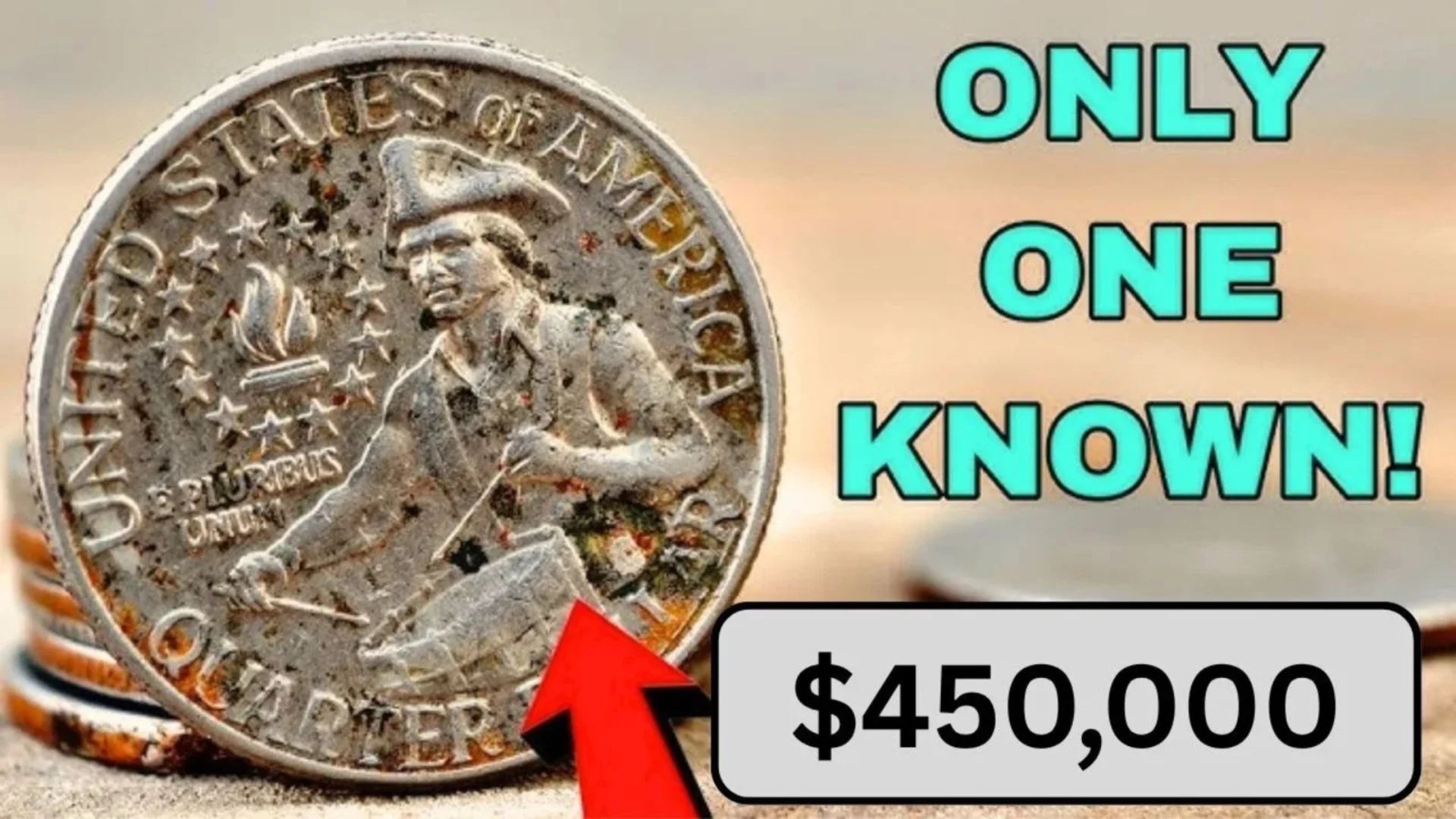If you own a 1976 quarter featuring the famous “Drummer Boy” design, you might be sitting on a small fortune. Recently, a rare version of this coin sold for a staggering $450,000. This article explains why this coin is so valuable, how to identify it, and what makes it a prized collectible today.
What Is the 1976 Quarter “Drummer Boy”?
In 1976, the U.S. Mint released special quarters to celebrate the nation’s bicentennial (200 years of independence). The coin features a unique design with a drummer boy marching, symbolizing patriotism and American history.

Key Features:
- Dual date “1776–1976” instead of a single year
- Depicts a drummer boy on the reverse (back) side
- Made for general circulation and special collector sets
Why Is the 1976 Drummer Boy Quarter So Valuable?
1. Rare Varieties and Errors
Some 1976 quarters with the drummer boy design have rare mistakes like double strikes, wrong metal content, or unique mint marks that make them highly sought after.
2. Limited Minting Errors
While millions of these quarters were made, only a few have minting errors or special characteristics that collectors prize.
3. High Collector Demand
The bicentennial theme is very popular, making these coins favorites for collectors, especially those with unusual features.
4. Recent High-Value Sales
One such coin recently sold for $450,000, showing how rare and valuable certain versions can be.
How to Identify a Valuable 1976 Drummer Boy Quarter
| Feature | What to Check |
|---|---|
| Date and Design | Ensure it has “1776–1976” and the drummer boy on reverse |
| Mint Mark | Look for “D” (Denver) or “S” (San Francisco) for collector sets |
| Errors | Check for double strikes, off-center prints, or metal flaws |
| Condition | Coins in mint or uncirculated condition are much more valuable |
| Weight & Metal | Some rare coins may have incorrect weight or metal composition due to errors |
What Makes This Quarter Stand Out?
- Symbol of American history: Celebrates the country’s 200th anniversary.
- Mint errors: Mistakes from the minting process can greatly increase value.
- Collector craze: Bicentennial coins remain popular among collectors worldwide.
- Proven rare sales: Recent auctions prove some examples fetch hundreds of thousands of dollars.
Tips for Coin Collectors
- Examine your coins carefully: Use a magnifying glass to spot errors or unusual marks.
- Protect your collection: Store coins in safe holders to avoid damage.
- Get professional grading: Certification by experts like PCGS or NGC adds value.
- Follow auction results: Keep track of recent sales to understand market value.
FAQ (Frequently Asked Questions)
Q1: How can I tell if my 1976 quarter is the valuable drummer boy type?
A: Look for the “1776–1976” date and the drummer boy design on the back. Check for mint marks and any unusual features or errors.
Q2: Are all 1976 quarters valuable?
A: No, only rare versions with mint errors, special mint marks, or perfect condition are worth a lot.
Q3: Where can I sell a rare 1976 drummer boy quarter?
A: Trusted coin dealers, auction houses, and online coin marketplaces are good places.
Q4: How common are minting errors on 1976 quarters?
A: They are rare but do exist. Errors like double strikes or off-center prints can make coins more valuable.
Q5: What affects the value of a 1976 quarter the most?
A: Condition, rarity, presence of errors, and collector demand are the biggest factors.
Conclusion
A 1976 quarter with the drummer boy design is not just ordinary change—it can be a valuable collectible worth thousands or even hundreds of thousands of dollars. With recent sales hitting $450,000, these coins prove that rare mint errors and historical significance can combine to create extraordinary value. If you have one, take time to examine it carefully and consider professional grading to unlock its full worth.